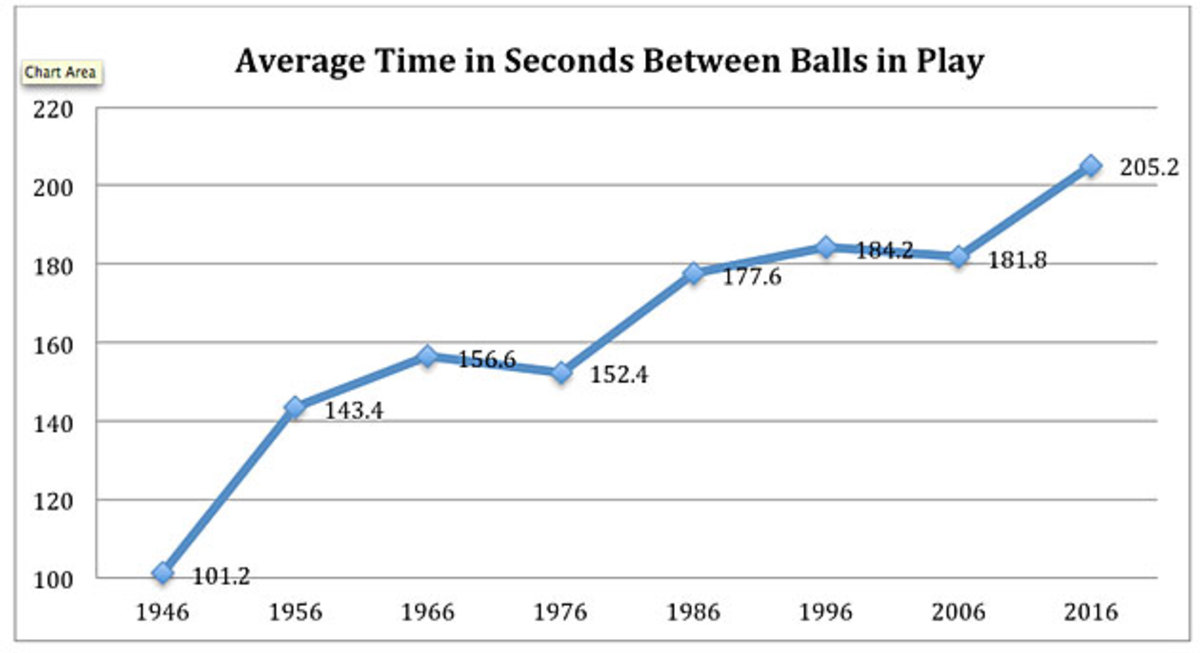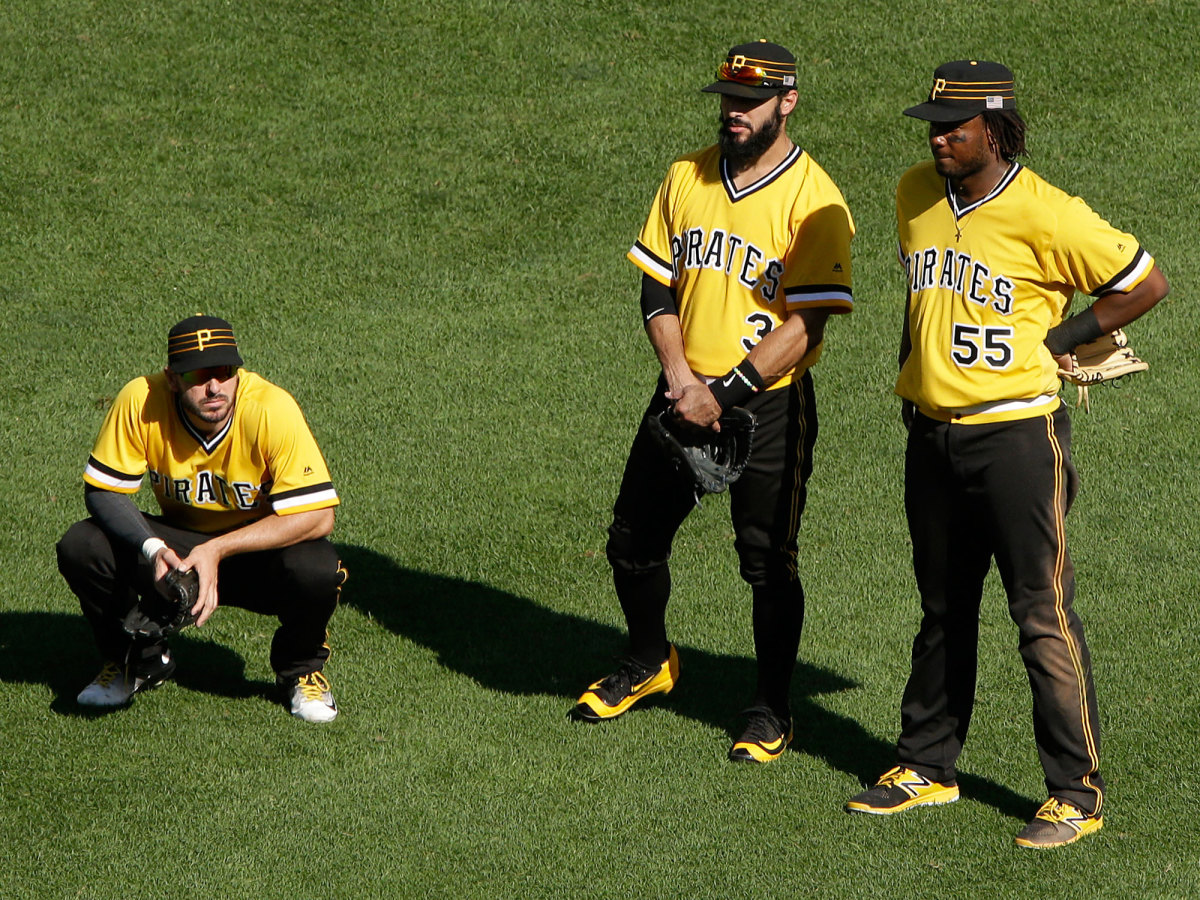Dead ball era: Raising the strike zone not the solution baseball needs to pressing problem

Baseball does not have a time of game problem. It has a pace of action problem.
The problem is this: People are being asked to watch games that are getting longer while the ball is put in play less. It’s the antithesis of modern culture, in which technology retrains our brains to demand visual and mental stimulation in shorter bursts.
Now you know why Major League Baseball is trying to reach an agreement with the players' association to raise the bottom of the strike zone in time for Opening Day. It is not about shaving a few minutes off the time of game. It’s about putting the ball in play more frequently.
The theory is that taking away the lowest of low strikes will reduce strikeouts and create more hittable pitches. Of course, it could also create longer counts and more walks or some other unintended consequences. The point is that MLB knows it has a pace of action problem—a problem that is growing—that does not position the game well to its next generation of fans in a crowded entertainment marketplace.
I’ve been telling you in recent years how relief pitching is suffocating baseball. More and more pitchers throwing harder and harder is a brutally efficient run prevention methodology that works. The inventory of power arms only grows. That’s because throwing a baseball is a very specific skill with few variables. It’s perfect for today’s hyper-focused society. We are applying professional training methods to the amateur market—successfully, and at younger ages. Hitting, on the other hand, is a complex read-and-react skill that involves far more variables. The training gap will only grow.
The raising of the strike zone is nothing but a small, interim step—baseball’s typical rate of change—to modernize the game. Until baseball moves to the inevitabilities of a pitch clock, a limited number of timeouts and a governor on relief pitching (such as requiring a minimum of two batters faced), everything else is just small nips and tucks that don’t amount to real change.
By trading Brandon Phillips to Atlanta, Reds clear middle infield space for two youngsters
The density of dead time in a baseball has grown by a staggering amount just in the past years. “Slowing the game down” has become a valued ideal. Visits to the mound to “coach up” the pitcher or change signs, and strolls around the mound or around the batter’s box to “mentally prepare” for the next pitch have become badges of honor. While behavior to “slow play” the game increases, so do velocity and spin, which has the effect of shortening the distance between the mound and plate. Hitters have less time than ever to react—while facing more pitchers with better stuff than ever. And so the rate of strikeouts has gone up for 11 consecutive years.
Add it up and you get this game where the gaps between the ball in play are getting longer and longer—with a noticeably sharp increase in such dead time in recent years.
Here is a graph that explains why baseball is looking to adjust the strike zone: the average amount of time, in seconds, between balls in play, seen over 10-year increments. Balls in play normally does not include home runs, because it is used to reflect plays on which defense is required. But for this purpose—the purpose of examining how the pace of action has changed—I folded in home runs as part of balls in play.

The trendline is obvious enough. But here is what you also need to know from the numbers:
• A ball gets put in play once every 3 minutes, 25.2 seconds in today’s game. That’s an additional 23.4 seconds of wait time in just 10 years—a 13% increase. After a relatively flat period, you can see the spike in the past decade—due mostly to strikeouts, the emphasis on relief pitching and dawdling.
• There were 9,287 fewer balls in play last year than just 10 years ago.
• The ball is not in play for 30.8% of plate appearances, up from 27.1% just 10 years ago, and 22.8% 40 years ago.
• Since 1976 the average game has six fewer balls in play but takes 31 minutes longer.
• Since the live ball era began in 1920 (and disregarding home runs just for this), the three pitching staffs that allowed the fewest balls in play in any full season all occurred last year: in order, the Cubs, the Dodgers and the Nationals.
The focus must be on pace of action. Time of game is an issue as old as baseball. As Bill James has pointed out, the romantic notion that baseball is played without a clock is a myth: before night games the clock was the setting sun. Without night games, umpires moved the game along so it could be completed before darkness.
As night games became prevalent, and then in the 1980s as more games were televised, “moving the game along” lost its place. In the last decade, as information has grown and the number of batters each pitcher faces has shrunk, more effort and thought goes into every pitch.
Peter Morris, writing 10 years ago in A Game of Inches, Volume 1 about the growth of timeouts, said, “It is important to recognize the shift from a game in which time was rarely out and in which the action was virtually continuous to one in which timeouts are frequent has removed one of the features that initially distinguished baseball.”

Baseball used to be more like soccer in its pace of movement and action. Now it encourages dawdling, because it does not enforce the 12-second rule between pitches, it does not enforce the one-foot-in-the-box rule, it does not empower umpires to “move the game along” and it allows players to call as many timeouts as they want whenever they want and for whatever trivial reason. Players play Major League Baseball at a slower pace than how they played baseball on every other level their whole lives.
Many players will argue they need to play slow. To test this theory in simple form, I decided to compare the fastest-working pitchers in baseball last year to the slowest-working pitchers in baseball. We’ve all heard the adage that the pitcher who works fast puts the hitter on defensive and also benefits from better defense behind him because his fielders stay on their toes. Guess what? It’s not true.
I looked at the combined winning percentage, ERA and batting average on balls in play of the 10 fastest-working qualified pitchers last year (call them the hares: Wade Miley, R.A. Dickey, Kyle Hendricks, Doug Fister, Jose Fernandez, Chris Sale, Marcus Stroman, Dan Straily, Kendall Graveman and Mike Leake) and compared them to the 10 slowest-working pitchers (the tortoises: Isashi Iwakuma, David Price, Masahiro Tanaka, CC Sabathia, Jimmy Nelson, Jeremy Hellickson, Edinson Volquez, Justin Verlander, Julio Teheran and Kenta Maeda).
The tortoises win. They won more often, posted a lower ERA and allowed a lower batting average on balls in play:
Pitchers | W-L, PCT. | ERA | BABIP |
|---|---|---|---|
Tortoises | 125-104, .546 | 3.83 | .288 |
Hares | 122-108, .530 | 3.94 | .293 |
Bullpens, even more so than rotations, are designed to keep the ball out of play. They are changing how baseball is played. One more comparison for you: check out how much the game has changed just since 2003:
Year | Balls in Play | Time of Game | Minutes per Balls in play |
|---|---|---|---|
2016 | 127,795 | 3 hours, 0 minutes | 3:25.2 |
2003 | 137,272 | 2 hours, 46 minutes | 2:56.4 |
You don’t have to go back to the 1970s to see how baseball has slowed. It’s a modern phenomenon that traces to the rise of the specialized bullpen and the almighty strikeout. Just since 2003, baseball has lost 10,000 balls in play, while the average wait to see one of them has increased by almost 30 seconds, or 16%.
Will a smaller strike zone help? I’m not sure. But the attention to improve the pace of action is the right one, with more needed.
